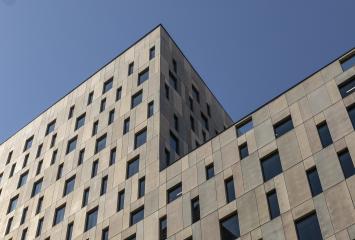Inclusive urbanism: a solution against social exclusion in the cities
About 56% of the world's population lives in cities according to the latest data from the World Bank. And the trend will continue to rise: the United Nations Department of Economic and Social Affairs forecasts a 13% increase by 2050, which will further intensify current urban challenges such as zoning, gentrification, ghettoization or loss of cultural identity. In the words of Richard Florida, an American expert on economic growth, "if we do nothing, the urban crisis will only deepen: our cities will become so expensive that they will become gated communities for the privileged only, and our neighborhoods will become poorer and more unequal". But one urban planning trend can prevent these tragic scenarios: inclusive urbanism.
Inclusive urbanism: an ethical and practical proposal
The maxim of inclusive urbanism, promoted in recent years from academic circles, is the creation of cities for the development of all people, regardless of their economic situation, nationality, age or gender. This may seem a metaphysical question, but it is in fact a physical question: the distribution of neighborhoods, the incorporation of elements or the quality of connections are palpable facts that have a direct impact on people's life opportunities. The urban planning of a city can complicate or facilitate the satisfaction of human needs. Urban planning can be oriented to the productivity of the system or to people. Inclusive urban planning chooses the latter. And it materializes it through these strategic decisions:
Self-sufficient environments
As the urbanization of humanity advances, cities become larger. This, added to a poor distribution of spaces that satisfy elementary and not so elementary personal needs, causes constant displacements that reduce the quality of life of citizens, when it does not directly prevent many of them from accessing some of these spaces. In contrast, inclusive urban planning chooses to equip the different areas with sports facilities, educational spaces, commercial spaces or meeting places, so that those who live nearby can meet all their needs almost immediately. This is the same principle underpinning Madnum, the country's first mixed-use professional and personal campus.
Public spaces
There was a time when cities were full of public spaces where communities met, interacted and evolved. However, the deep penetration of the private car led to a gradual replacement of these squares, parks and pedestrian avenues by roads and parking lots. Inclusive urbanism aims to reverse this trend. First, to recover the human-centric concept in cities. And second, to make it an accessible and safe place for all people, including children, whose exploration of it is delayed because of their guardians' fear of being run over. As architect Izaskun Chinchilla theorizes, "we are subjecting the entire population to a threat to their health and physical integrity".
Participatory development
One of the keys to the Madnum complex, designed by architecture firm Estudio Lamela, is its flexibility: its office spaces feature modular structures that allow for reconfiguration. That is the idea of inclusive building and interior design, and also the idea of inclusive urbanism. Everything is moving in the same direction. In this sense, and if this model prevails, the new cities will change over time according to the needs perceived by urban planning specialists, but also according to the needs of the citizens themselves. It will be the latter, as the protagonist of the modern city, who will lead the transformation, which will also generate a more faithful urban materialization of its cultural values. Identity will be recovered.
Green planning
There are many reasons why urban planning should go hand in hand with sustainability. Among them, and beyond empathy towards other forms of life on this planet or the preservation of key resources, is people's quality of life, the ultimate goal of inclusive urbanism. After all, and as scientific research shows, which underpins many of Madnum's green decisions, such as the inclusion of vegetated areas on campus, nature generates psychological, emotional and social well-being. In addition, green spaces are ideal for childhood development and for the self-care of the elderly, all of whom are just as much a part of the inclusive city as people of working age. The dream? That no one will ever be left out again.

